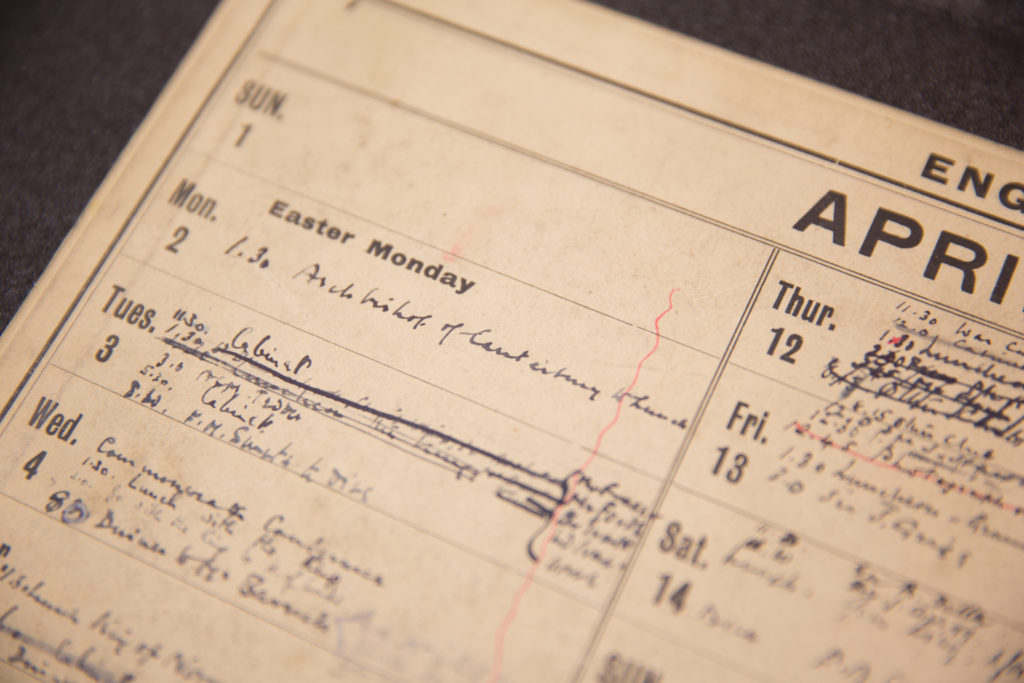The calendar entry in Winston Churchill’s engagement diary for November 14, 1939—written in italicized shorthand and faded black ink—reads: “6:00 Gen. Sikorski (Private Door).”
Churchill is First Lord of the Admiralty, a position he will hold for only eight months before becoming British Prime Minister. Władysław Sikorski is prime minister of the Polish government-in-exile. World War II is 75 days old.
“This was just two months after Germany and the Soviet Union invaded Poland,” said Rachel Trent, digital services manager at Gelman Library. “It’s this quiet notation in the calendar, and it’s interesting because you can see the story of how he met with this leader and had to do it secretly.”
Mr. Churchill’s engagement diary is part of the National Churchill Library and Center (NCLC) at the George Washington University, which will be the first permanent home in our nation’s capital for the study of Winston Churchill. The meeting, research, and learning space, housed on the ground floor of Gelman Library, is slated to open in Fall 2016.
Library staff members have created high-resolution digital images of the two-sided, 12- by 13-inch cards, which outline Mr. Churchill’s wartime leadership and activities between September 1939 and June 1945, as recorded by private secretaries. Students, faculty, and the public were invited to help transcribe these appointments, day by day, through a crowdsourcing website.
A GW history class is also helping with the transcription effort. The scribbled notes in the diary contain large quantities of data—patterns and rhythms in Churchill’s daily activities. In addition to transcribing and reviewing material, students in Jennifer Bertolet’s digital history course are pulling that data (including dates, times, and locations) and mapping it visually.
“It really is amazing to look at some mapping projects and how they get you to look at history in a different way,” said Dr. Bertolet, MA ’95, Ph.D. ’07, a visiting professor in the history department. “And crowdsourcing has opened up this whole other world for history buffs who want to participate in something like this but have jobs in other fields.”


